In this guide, I will show you how to create a WooCommerce product feed for NewEgg Marketplace.
Step 1: Create a New Feed and Map Your Product Attributes #
Gehen Sie zu Ihrem Produkt-Feed-Dashboard.
Klicken Sie auf die Schaltfläche Neuen Feed hinzufügen.
Sie gelangen dann zur Seite für die Erstellung des Feeds.
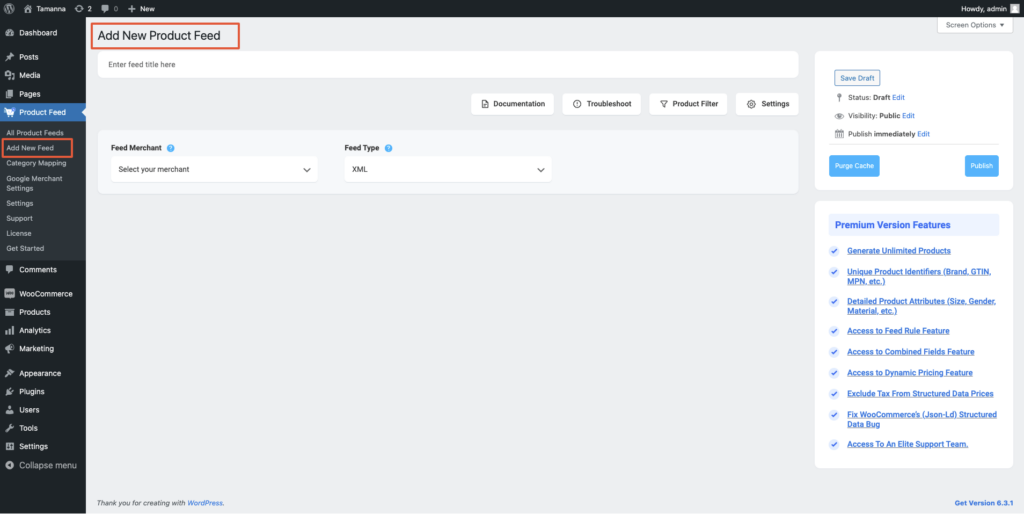
Also, hier,
1. Oben haben Sie die Möglichkeit, dem Feed einen Titel zu geben. Geben Sie Ihrem Feed einen Namen.
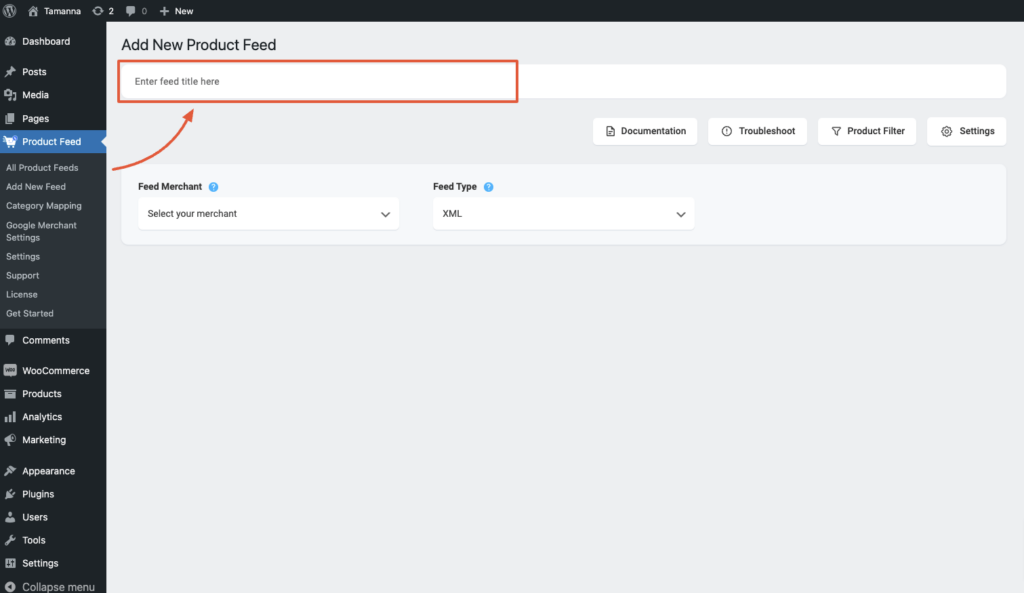
2. Direkt unter dem Titel sehen Sie eine Option zur Auswahl Ihres bevorzugten Händlers. Klicken Sie einfach auf die Dropdown-Schaltfläche Händler füttern und wählen Sie Ihren bevorzugten Händler aus der Dropdown-Liste aus oder suchen Sie in der Dropdown-Box.
Wählen Sie Ihren bevorzugten Händler aus und alle erforderlichen Attribute werden unten geladen.
Select NewEgg from the dropdown list.
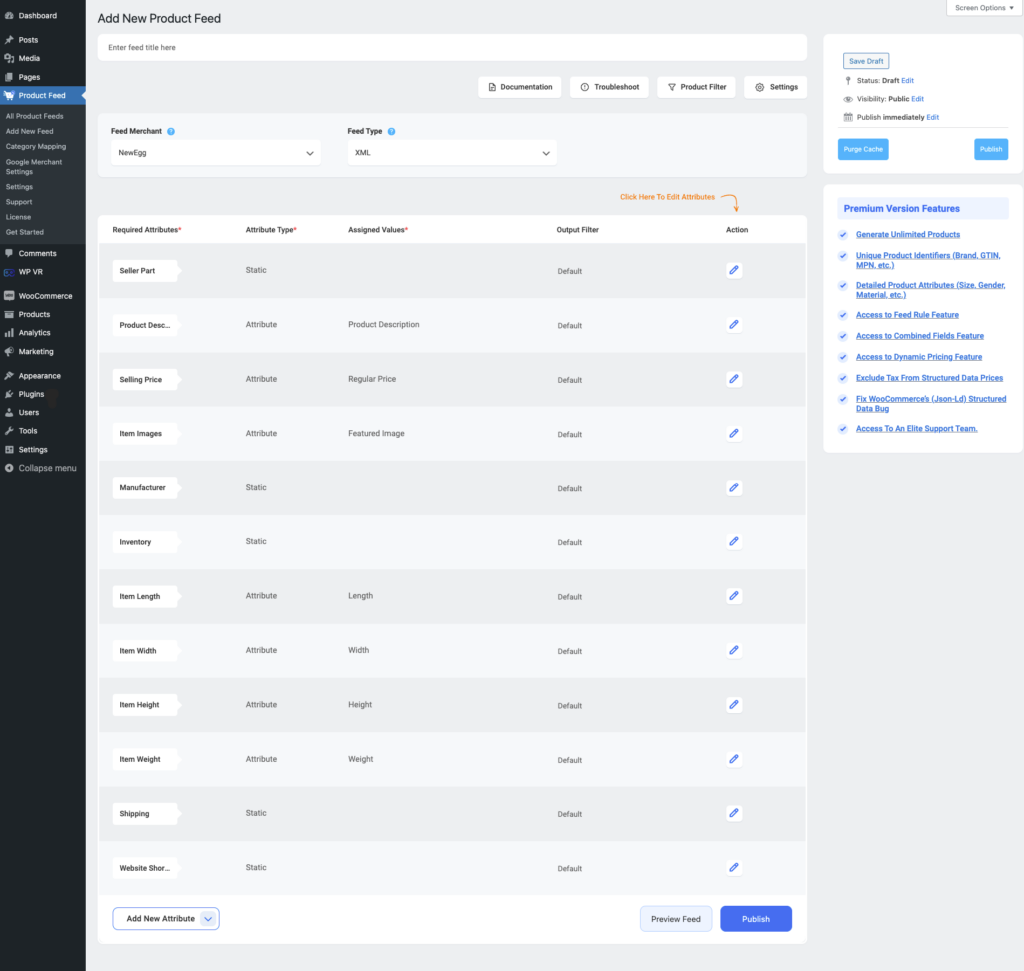
**Please note that NewEgg accepts XML, CSV, and TXT feed file submissions. So you can change the feed format type from the Feed Type dropdown as per your need. An XML feed is selected by default, and we will create an XML feed in this doc.
3. You can see that most of the attributes are already configured – their values are assigned properly, You can change the assigned values as per your need or you can keep them as it is.
Die übrigen Attributwerte müssen Sie jedoch manuell zuweisen.
For NewEgg, you need to assign values for the following attributes:
- Seller Part
- Produktmarke
This should be the Brand name of the product you are selling. If you are the manufacturer, you can set the type as Static and input your company name here.
If you have different brand names for different products, you will have to save the value in a custom field or product attribute and then use that value here.
**You may also use Perfect Brands for WooCommerce, which will make it easier to assign and use brand names.
- Inventory
Here, you can insert the number of products you have in your stock
- Shipping
Insert the Shipping cost that you want to add to your product cost.
- Website Short Title
Schritt 2: Futtermittelkonfiguration #
1. Scroll up to the top and here, you will see that there are four options.
- Dokumentation
- Fehlerbehebung
- Produkt-Filter
- Settings
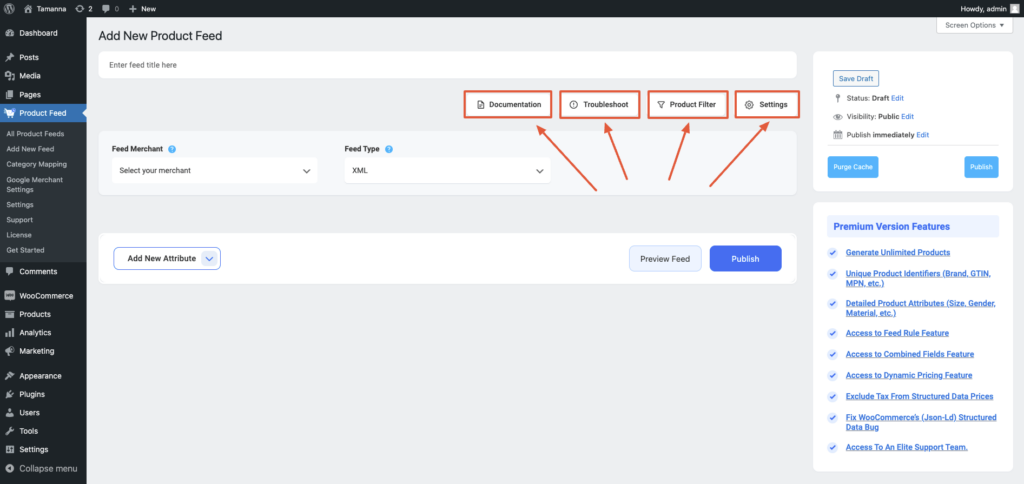
2. Lassen Sie uns zunächst die Funktionen in den Produkteinstellungen konfigurieren. Klicken Sie auf die Schaltfläche Produkteinstellungen, woraufhin sich auf der rechten Seite des Bildschirms eine Schublade öffnet.
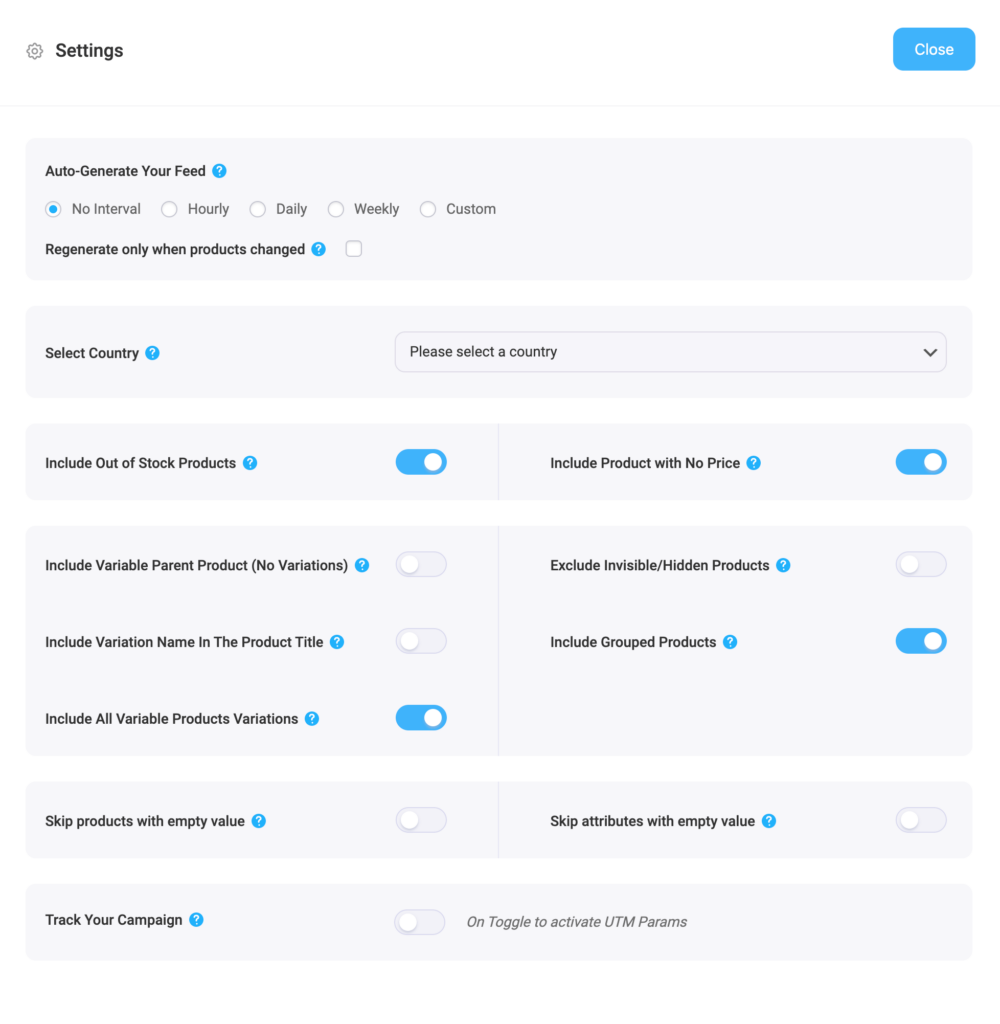
3. Die erste Option, die Sie sehen, ist Auto-Generate Your Feed.
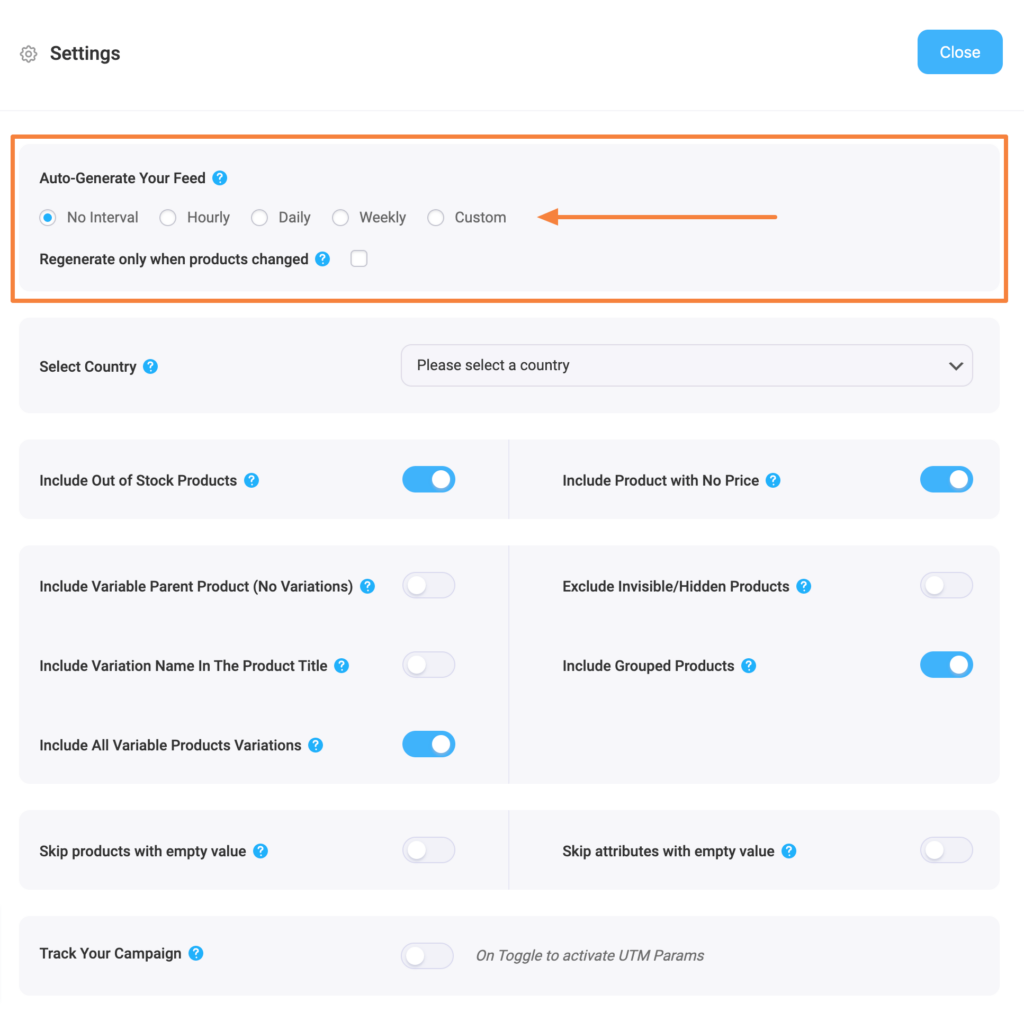
Mit dieser Option können Sie eine automatische Aktualisierung des Feeds in bestimmten Abständen planen. Wählen Sie eine Option, um eine automatische Aktualisierung einzustellen, oder belassen Sie es bei "Kein Intervall", wenn Sie keine automatische Aktualisierung des Feeds einstellen möchten.
4. Verwenden Sie dann je nach Bedarf die folgenden Optionen.
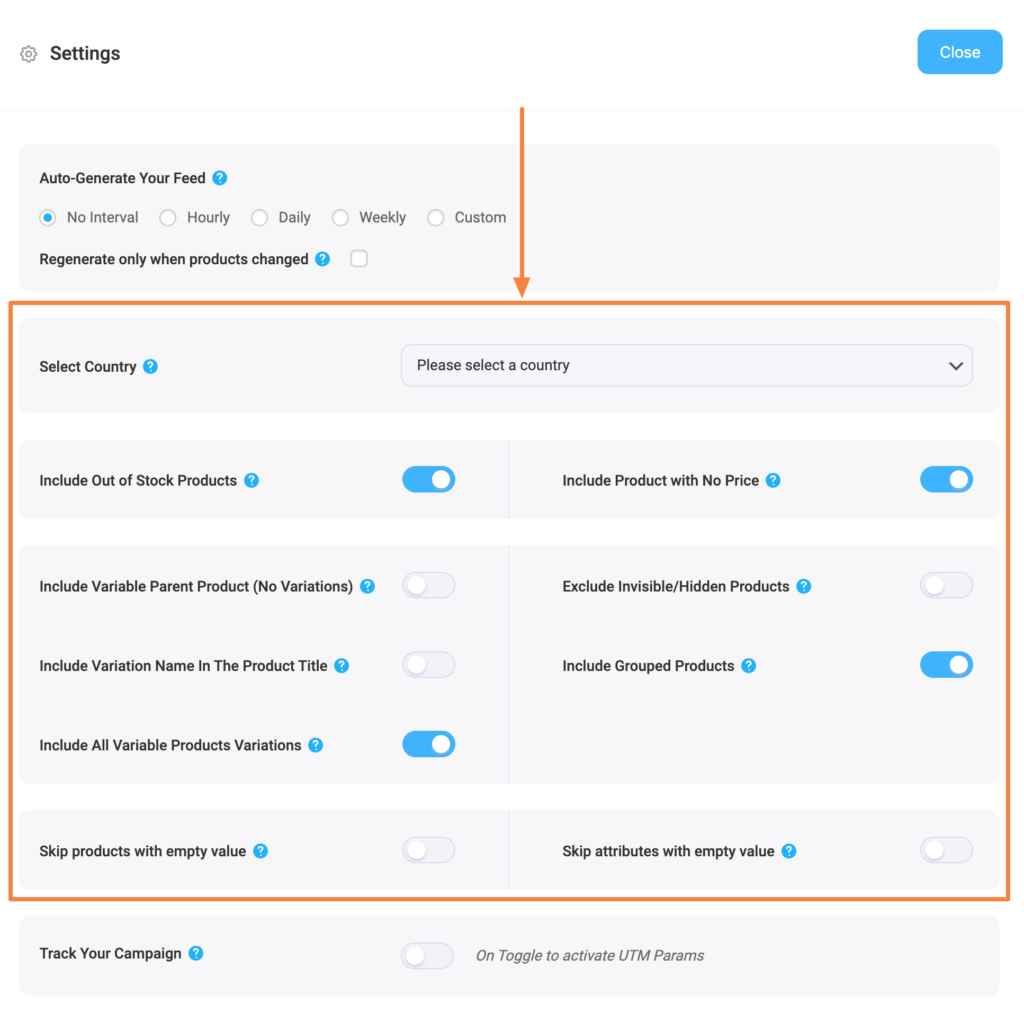
- Land/Region auswählen
- Wählen Sie eine Region aus diesem Dropdown-Menü, wenn Sie die Versandinformationen in Ihren Feed aufnehmen möchten. Sobald Sie die Region ausgewählt haben, müssen Sie das Attribut Versand in Ihren Feed einfügen, um die Versandwerte zu erhalten.
- In diesem Dokument erfahren Sie, wie Sie die Versandinformationen in Ihren Feed aufnehmen können.
- Include Out of Stock Products
-If you want to include the out-of-stock products, then you can enable the option.
-For this feed, let’s not use this option and keep its value as “No“. - Include Variable Parent Product (Without Variations)
-If you want to include the parent feed for variable products, then you can enable the option.
-Few merchants such as Google Shopping or Facebook don’t require you to submit parent products, however, there are many other merchants such as eBay MIP, that require you to submit product products in the feed.
-For this feed, let’s not use this option and keep its value as “No“. - Include All Variable Products Variations -
-Wenn Sie nur einfache Produkte in den Feed aufnehmen möchten und keine variablen Produkte, dann belassen Sie den Wert auf "Nein".
-Wenn Sie sowohl einfache Produkte als auch variable Produkte an Google Shopping übermitteln möchten, dann wählen Sie den Wert "Ja".
-Lassen Sie uns diese Funktion nutzen und markieren Sie sie als "Ja" für diesen Feed. - Include Variation Name In The Product Title
-Few merchants such as Google Shopping, suggest you add the variation term to the Product name in case you are uploading variable products, however, it is completely optional.
-So if you want to include the variant terms to the variable product names, then you can set its value as “Yes“.
-Let’s use this feature, and mark it as “Yes“, for this feed. - Gruppierte Produkte einbeziehen
- Wenn Sie gruppierte Produkte haben, ist es am besten, das übergeordnete Produkt des von Ihnen erstellten gruppierten Produkts einzureichen.
- Markieren Sie daher diese Option als "Ja". - Exclude Invisible/Hidden Products
-You might have certain products on your store that are marked as hidden or invisible on WooCommerce.
-If you want to generate feed for Simple products only, then you can mark this option as “Yes” to exclude invisible products from the feed.
-However, product variants are by default marked as Invisible on WooCommerce. So if you include variable products to the feed, then you should mark this as “No“.
-Since in this feed we are including product variants, we will not use this feature and keep it as “No“. - Jedes Attribut überspringen, wenn der Wert leer ist
- Wenn Sie diese Funktion aktivieren, werden alle Attribute eines Produkts ausgeschlossen, wenn der Attributwert fehlt.
- Für diesen Feed wollen wir diese Option nicht verwenden und den Wert auf "Nein" belassen.
5. Unten finden Sie eine Option zum Verfolgen Ihrer Kampagne (Analytics-Parameter).
Verwenden Sie diese Option, wenn Sie den Produktlinks in Ihrem Produkt-Feed Analyseparameter hinzufügen möchten, damit Sie die Produktleistung Ihrer Produkte verfolgen können.
6. Schließen Sie nun die Schublade und klicken Sie auf die Option Produktfilter. Es öffnet sich eine neue Schublade auf der rechten Seite.
Oben haben Sie die Möglichkeit, den benutzerdefinierten Filter oder die Funktion Feed-Regeln (PRO) zu verwenden.
Über das Dropdown-Menü Filter erhalten Sie die Feed-Filteroptionen.
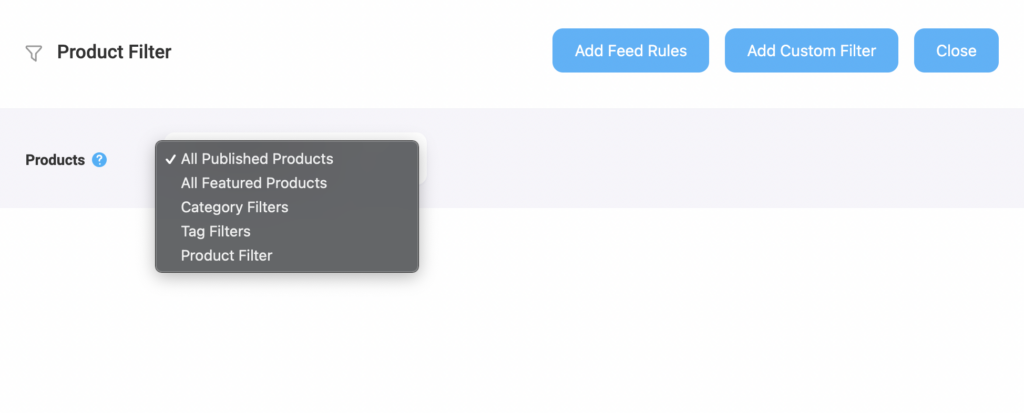
Wählen Sie die Produkte, die Sie in den Feed aufnehmen möchten, mit einem beliebigen Filter aus. Standardmäßig ist "Alle veröffentlichten Produkte" ausgewählt.
Sie können alle anderen Filteroptionen, wie z. B. den benutzerdefinierten Filter, den Kategoriefilter und den Tag-Filter, verwenden, um die gewünschten Produkte einzuschließen (oder die Produkte auszuschließen, die Sie nicht einschließen möchten).
Für ein Basisfutter können Sie es so lassen, wie es ist.
Step 3: Publish WooCommerce Product Feed For NewEgg Marketplace #
Nachdem Sie Ihren Feed konfiguriert haben, ist es nun an der Zeit, den Feed zu veröffentlichen.
Scrollen Sie zurück nach oben, und Sie finden auf der rechten Seite eine Schaltfläche Veröffentlichen.
Klicken Sie auf die Schaltfläche Veröffentlichen, und Ihr Feed wird erstellt.
Sobald die Erstellung des Feeds abgeschlossen ist, können Sie den Feed anzeigen oder herunterladen.
That’s it. Your WooCommerce XML product feed for the NewEgg marketplace is generated.
Now, log in to your merchant center, and there you will get the option to upload your feed to the NewEgg marketplace to list your products.





